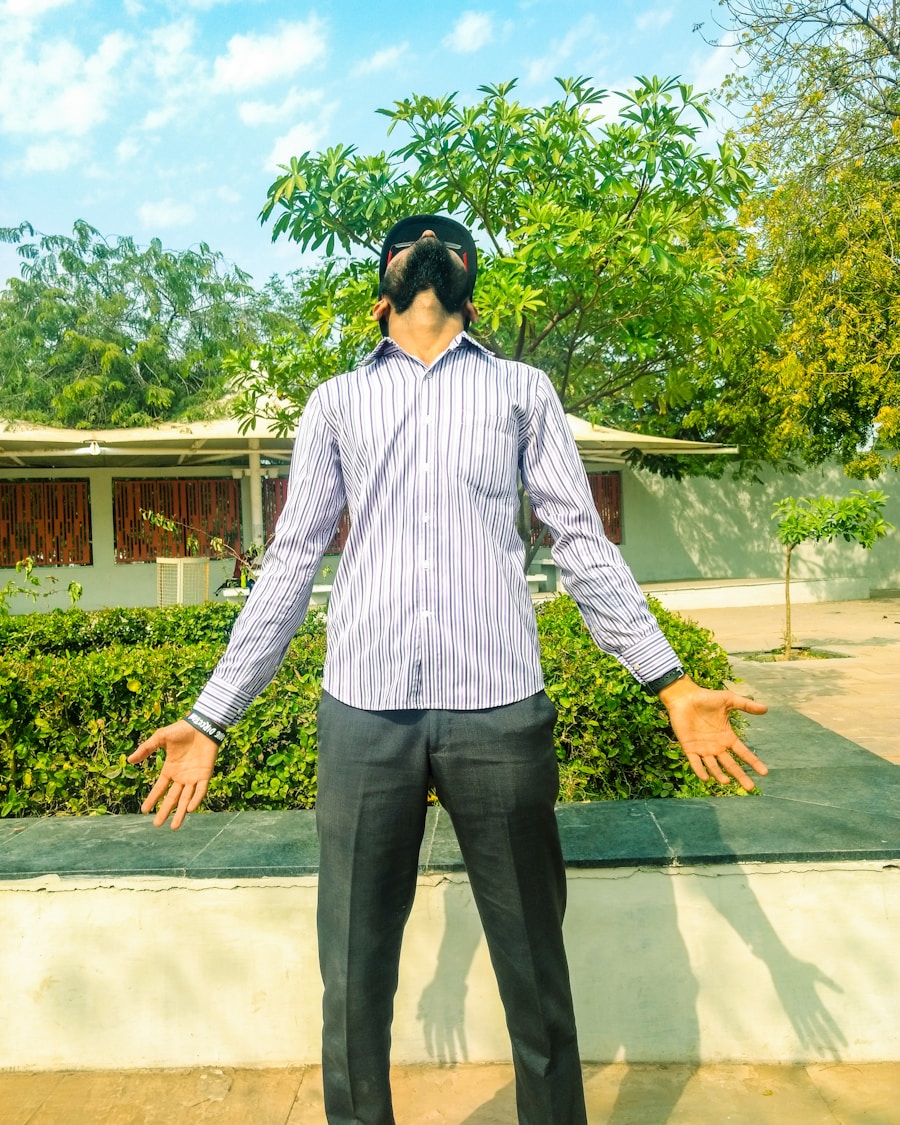Non-verbal communication plays a crucial role in how we convey messages and interpret the intentions of others. It encompasses a wide range of behaviors, including facial expressions, gestures, posture, eye contact, and even the physical distance we maintain from others. Research suggests that a significant portion of our communication—estimated to be as high as 93%—is non-verbal.
This statistic underscores the importance of understanding and mastering non-verbal cues, as they can often convey emotions and attitudes more effectively than words alone. For instance, a simple smile can express warmth and friendliness, while crossed arms may signal defensiveness or discomfort. Moreover, non-verbal communication is not just about what we express but also about what we perceive from others.
Our ability to read non-verbal signals can enhance our interpersonal interactions, allowing us to respond appropriately to the emotional states of those around us. In professional settings, being attuned to non-verbal cues can lead to better teamwork and collaboration. For example, a manager who notices a team member’s lack of eye contact may recognize that the individual is feeling disengaged or uncertain, prompting a conversation that could address underlying issues.
Thus, the ability to interpret and utilize non-verbal communication effectively is essential for fostering meaningful connections in both personal and professional contexts.
Key Takeaways
- Non-verbal communication is just as important as verbal communication in conveying messages and building relationships.
- Body language plays a significant role in how others perceive and interpret our intentions and emotions.
- To improve non-verbal skills, focus on maintaining eye contact, using open body posture, and being mindful of facial expressions and gestures.
- Cultural differences can greatly impact non-verbal communication, so it’s important to be aware of and respectful towards different cultural norms.
- Active listening, which involves using non-verbal cues to show engagement and understanding, is crucial for effective communication and building rapport with others.
Body Language and Its Impact
Interpreting Body Language in Social Interactions
Understanding the subtleties of body language can greatly improve social interactions. For instance, in a job interview, a candidate who maintains an open posture and uses appropriate gestures to emphasize points is likely to leave a more positive impression than one who appears closed off or fidgety.
The Impact of Body Language on Group Dynamics
The influence of body language extends beyond individual interactions, shaping group dynamics as well. In team meetings, leaders who exhibit confident body language can inspire trust and motivate their team members. Conversely, if a leader displays signs of uncertainty through their body language, it may lead to a lack of confidence among team members.
Cultural Variations and Awareness
It is essential to recognize that body language can vary significantly across different contexts. What is considered assertive in one culture may be perceived as aggressive in another. Therefore, being aware of body language not only enhances personal communication but also contributes to creating a positive atmosphere in group settings.
Tips for Improving Your Non-Verbal Skills

Improving non-verbal communication skills requires conscious effort and practice. One effective strategy is to become more aware of your own body language. This self-awareness can be cultivated through mindfulness techniques, such as observing your posture and gestures during conversations.
Recording yourself during practice sessions or real interactions can provide valuable insights into your non-verbal habits. For instance, you might discover that you tend to fidget or avoid eye contact when discussing challenging topics. Recognizing these patterns allows you to make intentional adjustments that enhance your overall communication effectiveness.
Another important aspect of improving non-verbal skills is to observe others. Pay attention to how people around you use body language in various situations. Notice how their gestures complement their spoken words or how their facial expressions convey emotions that may not be explicitly stated.
Engaging in active observation can help you identify effective non-verbal strategies that you can incorporate into your own communication style. Additionally, practicing with friends or colleagues can provide constructive feedback on your non-verbal cues. Role-playing different scenarios can help you experiment with various body language techniques and receive input on how they are perceived by others.
Understanding Cultural Differences in Non-Verbal Communication
Cultural differences significantly influence non-verbal communication, making it essential for individuals to be culturally aware when interacting with others. Different cultures have unique norms regarding gestures, eye contact, personal space, and even facial expressions. For example, while maintaining direct eye contact is often seen as a sign of confidence in Western cultures, it may be perceived as disrespectful or confrontational in some Asian cultures.
Similarly, the concept of personal space varies widely; in some cultures, close proximity during conversation is a sign of intimacy and trust, while in others it may be viewed as intrusive. To navigate these cultural nuances effectively, individuals should approach cross-cultural interactions with an open mind and a willingness to learn. Engaging in cultural sensitivity training or workshops can provide valuable insights into the specific non-verbal cues associated with different cultures.
Additionally, when communicating with individuals from diverse backgrounds, it is beneficial to observe their non-verbal behavior closely and adapt your own accordingly. This adaptability not only demonstrates respect for cultural differences but also fosters stronger connections by creating an environment where all parties feel understood and valued.
Practicing Active Listening
Active listening is an essential skill that complements non-verbal communication by enhancing understanding and connection between individuals. It involves fully engaging with the speaker through verbal affirmations and non-verbal cues such as nodding or maintaining eye contact. By demonstrating genuine interest in what the other person is saying, you create an atmosphere of trust and openness that encourages more meaningful dialogue.
For instance, during a conversation where someone shares their concerns, responding with appropriate nods and facial expressions can signal empathy and validation. In addition to using non-verbal cues to show engagement, active listening also requires being mindful of your own body language. Avoiding distractions—such as checking your phone or looking away—can help convey that you are fully present in the moment.
Practicing active listening not only improves your ability to understand others but also enhances your own non-verbal communication skills. As you become more attuned to the emotions and intentions behind spoken words, you will find it easier to respond appropriately with your own body language, creating a more cohesive interaction.
Using Non-Verbal Communication to Build Rapport

Building rapport is essential for establishing strong relationships in both personal and professional settings, and non-verbal communication plays a pivotal role in this process. When individuals feel comfortable with each other, they are more likely to engage openly and honestly. One effective way to build rapport through non-verbal communication is by mirroring the body language of the person you are interacting with.
This technique involves subtly mimicking their gestures or posture, which can create a sense of connection and understanding. For example, if someone leans forward while speaking passionately about a topic, leaning forward in response can signal that you share their enthusiasm. Another powerful tool for building rapport is the use of appropriate touch—when culturally acceptable and consensual.
A friendly handshake or a light touch on the arm during conversation can enhance feelings of warmth and connection. However, it is crucial to be mindful of personal boundaries and cultural norms regarding touch; what may be acceptable in one culture could be inappropriate in another. Additionally, maintaining an open posture and using facial expressions that convey interest and empathy can further strengthen rapport-building efforts.
By consciously employing these non-verbal strategies, individuals can foster deeper connections that enhance collaboration and mutual understanding in various contexts.
If you’re interested in improving your non-verbal skills, you may also want to check out this article on the incredible benefits of yoga for mental and physical health.
By incorporating yoga into your routine, you can enhance your non-verbal communication abilities and become a more effective communicator.
FAQs
What are non-verbal skills?
Non-verbal skills refer to the communication and interaction techniques that do not involve spoken or written words. These skills include body language, facial expressions, gestures, eye contact, posture, and tone of voice.
Why are non-verbal skills important?
Non-verbal skills play a crucial role in communication as they can convey emotions, attitudes, and intentions. They can also enhance or detract from the message being conveyed verbally.
How can I improve my non-verbal skills?
Improving non-verbal skills involves being aware of your own body language and gestures, practicing active listening, maintaining eye contact, and being mindful of your tone of voice and posture. It also involves being sensitive to the non-verbal cues of others.
What are some common non-verbal communication mistakes to avoid?
Common non-verbal communication mistakes to avoid include avoiding eye contact, crossing arms, fidgeting, slouching, and using inappropriate facial expressions. These can negatively impact the way others perceive you and your message.
How can non-verbal skills be beneficial in professional settings?
In professional settings, strong non-verbal skills can help build rapport, convey confidence and credibility, and enhance leadership abilities. They can also aid in effective public speaking, negotiation, and conflict resolution.






















+ There are no comments
Add yours